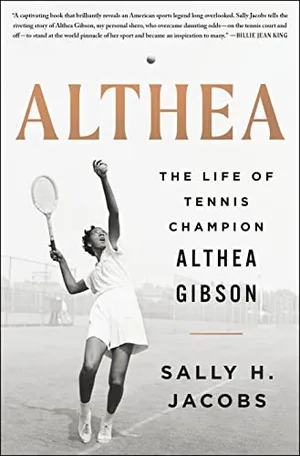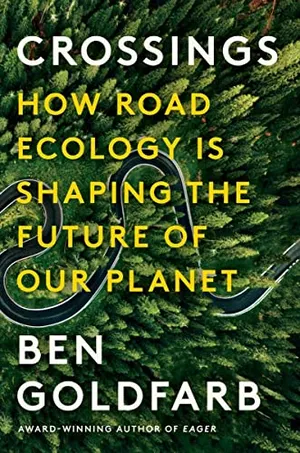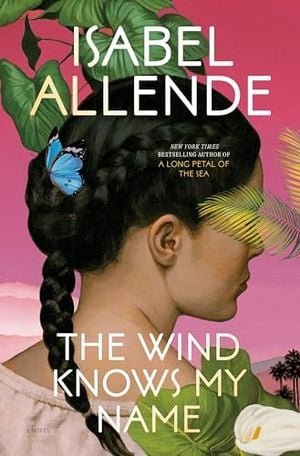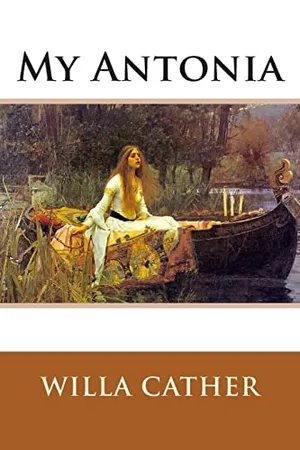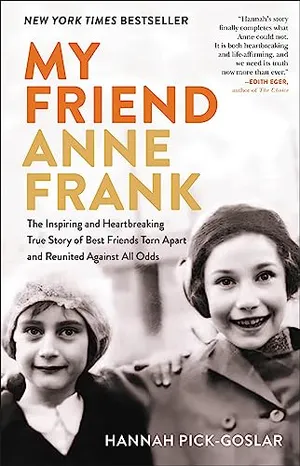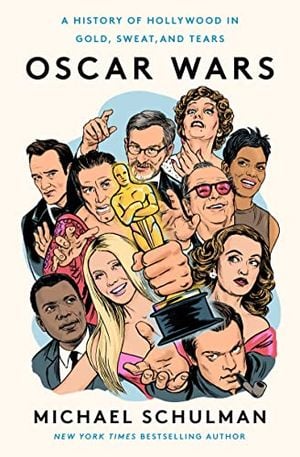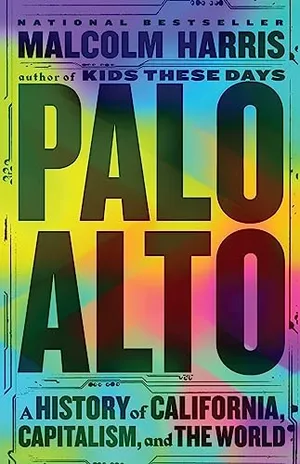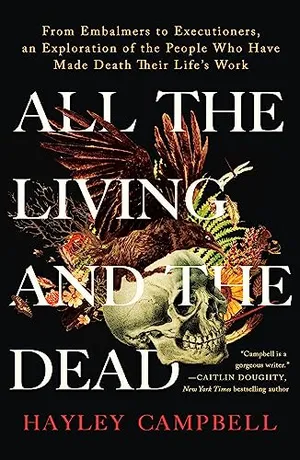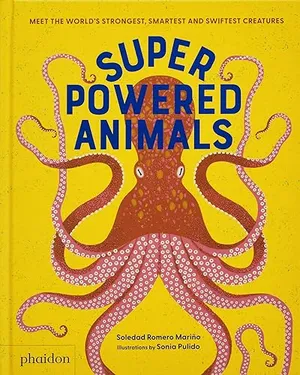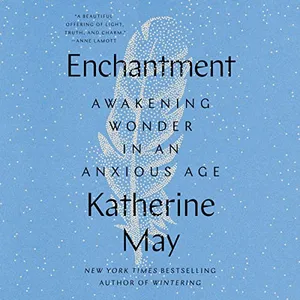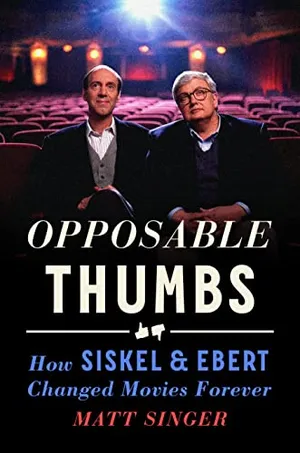The Books We Loved
Smithsonian editors choose their favorite (mostly) nonfiction of (mostly) 2023
:focal(700x527:701x528)/https://tf-cmsv2-smithsonianmag-media.s3.amazonaws.com/filer_public/09/14/09145e8e-1efd-4970-b5fc-b82ce52d398f/smithmag-podcast-ep13-bestbooks2023-article.jpg)
You can describe what a journalist does in any number of ways. One definition that’s as accurate as any is that a journalist is someone who liked having homework back when they were in school so much that they decided to keep doing homework for a career.
That certainly describes my colleagues at Smithsonian magazine. We’re all big readers. So we thought that before our brief winter hiatus—a time when many of us are trying to think of gift ideas to please the empathetic, curious people in our lives—we’d poll the staff of Smithsonian on their favorite books they read this year. Because we’re primarily a history and science magazine, we tried to steer them toward nonfiction published in 2023, but as you’ll see, we weren’t sticklers for either criterion. We thought it better to let you hear from our staff about the books they were most genuinely excited to share. You’ll recognize some of these voices if you’re an avid listener, but this episode also provides the chance to hear from some of the talented staffers we haven’t been able to feature on the show before now.
A transcript is below. To subscribe to “There’s More to That,” and to listen to past episodes on Killers of the Flower Moon; NASA’s OSIRIS-REx asteroid sample return mission; a photography project focused on African American descendants of Civil War veterans; and more, find us on Apple Podcasts, Spotify or wherever you get your podcasts. We’ll be taking a short break while we enjoy the holidays and then get to work on our next batch of episodes. Catch up on any that you’ve missed, and we’ll see you back here when our new episodes resume in mid-February.
[CLIP FROM RADIO AD, 1992]
Smithsonian is a dazzling magazine that entertains and surprises. Articles about everything from bubblegum to Goya to why dogs bark.
Chris Klimek: This 1992 ad has it right. We cover a lot here at Smithsonian magazine.
[RADIO AD CONTINUES]
How about faraway galaxies, ants from hell and Andy Warhol? The writing is colorful, the graphics contemporary, the attitude is now!
Klimek: Thirty years later, our attitude is still now! Anyway, the people who make the magazine know a lot. We read a lot. So here at the end of the year, we thought you might want to know what we’re all reading and enjoying. We asked a bunch of colleagues for their favorite nonfiction books of 2023. So whether you’re looking for a stocking stuffer or for something to cozy up next to the yule log with, we’ve got something for you—besides a subscription to the magazine, of course.
[RADIO AD CONTINUES]
It’s so interesting that you’ll be more interesting. But don’t take our word for it, find out for yourself. Order Smithsonian magazine. Now call toll-free, 1-800 …
Klimek: From Smithsonian magazine and PRX Productions, this is “There’s More to That,” the show where everyone can find a story to get excited about. In this episode, our favorite books from 2023. I’m Chris Klimek.
Tracy Scott Forson: I don’t think I would necessarily call myself a sports fan. I am a history fan.
Klimek: Tracy Scott Forson is a senior editor at Smithsonian magazine.
Scott Forson: I’m an American history fan, specifically. I just like hearing people’s stories of overcoming adversity and rising to challenges; the underdog succeeding. I guess we all like an underdog story to some extent.
Klimek: Tracy’s favorite nonfiction book this year was Althea: The Life of Tennis Champion Althea Gibson by Sally Jacobs.
Klimek (to Scott Forson): For any listeners who don’t know, who was Althea Gibson?
Scott Forson: Oh, well, she was a tennis player who ended up being one of the first African American women to win championships like Wimbledon and the U.S. Open. She was integral as far as integrating the sport of tennis.
Klimek: Why’d you like this book?
Scott Forson: The scenes, the way that Sally Jacobs writes them. I felt like I could visualize the tennis matches in my head. Yeah, it was almost like watching a movie in a way. So it talked about the weather, the number of spectators at the court, how each competitor played, the differences in how they played. I thought it was very well written, with a lot of detail that could help you visualize it. One of the chapters that stuck out to me was about a loss that Althea had, the first tennis player that she played against while she was integrating a restricted court. And I thought that was really interesting that she lost, but that it was still a win in a way. Sometimes when you lose, there’s still a lot of success in it.
Althea: The Life of Tennis Champion Althea Gibson
Former Boston Globe reporter Sally H. Jacobs tells the heart-rending story of Althea Gibson, a remarkable woman who was a trailblazer, a champion, and one of the most remarkable Americans of the twentieth century.
Sometimes when you think about pioneers and people who helped break down Jim Crow barriers, you think that they were all very militant, and that was even their goal sometimes. But it seems like for Althea Gibson, she just really wanted to play tennis. And the fact that she was integrating a tennis court was not really her goal—her goal was to play. But to be the best, she had to go up against the best, and that’s how she ended up where she ended up. It helped me relate to her like she was just a regular person. But because she was so good at what she was doing, that’s why she was thrust into the forefront, so I didn’t know that.
Klimek: Is there anyone in your life who you think would enjoy this book? Who are you picturing when you think of someone who might like this?
Scott Forson: I guess the first person that comes to mind is my mother. I think because she was alive during that time. And I don’t think she knows a lot about the story, but I think she could relate just to the climate. And probably if I were to suggest it to a younger person—I have a cousin and goddaughter, so I would probably recommend it to her, because I think it’s something that teaches you to persevere and to keep trying and eventually find successes. When you may not reach the goal that you set for yourself, you can still use it in a positive way to move forward.
Chris Klimek: Is “science editor” your title?
Joe Spring: Yeah, I think it’s longer than that, but that’s basically what I am. I think it's “associate web editor of science for digital” or something like that.
Klimek: Oh, my god.
Spring: I can double—
Klimek: Maybe we should just say you’re an editor?
Spring: Yeah, a science editor.
Klimek: Joe Spring is a science editor.
Spring: Vice president to the associate of … yeah.
Klimek: Yes, let’s get a few more punctuation marks in there.
Spring: For this list, I’m recommending Crossings: How Road Ecology is Shaping the Future of Our Planet by Ben Goldfarb.
Klimek: Why did you like this book?
Spring: I love this book because it’s an excellent combination of deep reporting and in-the-field reporting with scientists. Right off in the start of the book, Goldfarb goes into detail with all these jaw-dropping stats about how roads impact wildlife and sets the scene. But then pretty quickly he goes out into the field with scientists, and that’s where the strength of the book lies. So he goes out with scientists studying how roads impact snakes in Central America or how roads impact insects in North America. He’s got a wry sensibility, and he takes complex science and makes it really easy to digest. And the book is not just informative but entertaining as a result.
Klimek: So what is road ecology? Is it the effect that roads have on wildlife?
Spring: Roads are a key impactor for wildlife around the world. And the way that they impact wildlife also impacts people, as well. One of the stats in the book that really grabbed me was that it’s estimated that 1 million deer a year are involved in crashes on U.S. roads. That leads to, I think, 20,000 injuries of people and 200 deaths a year. And that’s the most fatalities for any wild animal. That stat is obviously a depressing stat, but there’s a lot in the book that’s hopeful too. One of the things that Goldfarb does in the book is go into some of the innovations that have recently been built or are in the works to prevent conflicts between road and wildlife, so underpasses in some locations, wildlife overpasses in some locations.
Crossings: How Road Ecology Is Shaping the Future of Our Planet
While roads are so ubiquitous they're practically invisible to us, wild animals experience them as entirely alien forces of death and disruption. In "Crossings," environmental journalist Ben Goldfarb travels throughout the United States and around the world to investigate how roads have transformed our planet.
Klimek: I feel like we just skipped right over the fact that he apparently did answer why the chicken crossed the road, which is because there was a hen on the other side of the road.
Spring: Yeah, he’s just really wry throughout the book, and that makes the book engaging and really easy to read.
Klimek: How did this book come to your attention?
Spring: This book came to my attention because I really like Ben Goldfarb. I think he’s one of the best science and nature writers out there. I read his previous book, which was called Eager, which was all about beavers in North America, and it was a similar style of book. It was a combination of deep reporting and in-the-field reports with scientists, and this book is more of the same, and it’s even better than that one, I think. I think this book is for anyone. If you’re a general reader that has any interest in science, you would love this book. If you’re a fan of writers like David Quammen or Elizabeth Kolbert, this book is right up your alley.
Beth Py-Lieberman: Oh, I’m excited to share this with you.
Klimek: Beth Py-Lieberman is an O.G. with Smithsonian magazine who oversees our coverage of the Smithsonian museums. She herself published a book this year. It’s called The Object at Hand. It’s a compilation of Smithsonian magazine’s coverage of objects from inside the Smithsonian museum collections, including the Hope Diamond and a glass-plate portrait of Abraham Lincoln.
Beth is also retiring this year.
Py-Lieberman: It’s 37 years, December 1, and I decided it was a random year to hang up my pencil, put it down.
Klimek: Because it’s a special occasion, we were willing to forget that we asked her to recommend a work of nonfiction. But it’s also because she was so eager to talk about The Wind Knows My Name by Isabel Allende.
Py-Lieberman: I love Isabel Allende, and so when a new book of hers comes out, I’m the first to buy it. This book, though, speaks to a lot of issues that we are experiencing today. This is a story about children and the trauma that is brought to them during times of war. This little girl who’s the center of the story is Anita Díaz. And we meet her in Nogales at the border in 2019, at a time when the former administration was separating children from their parents. Little Anita is there, she’s blind, and her mother is taken away from her in chains. And she lives with that moment when her mother is taken from her.
And the other character in this story is Samuel Adler. He’s a young boy in Vienna on the night of November 9, 1938, known as Kristallnacht. And on that night, tremendous violence separates his family, and his mother figures out a way to get him on a train and out of harm’s way, and he never sees his family again. And so by twists and turns, Samuel Adler many years later comes to know Anita Diaz, who never sees her mother again.
Klimek: This sounds like an epic tale. Has historical fiction occasionally intersected with your professional duties?
Py-Lieberman: Oh, boy, that’s a really terrific question. I think anytime that we engage with novels like this, we’re engaging with empathy. And I think that anytime that we engage with trauma and difficult stories of our past, we again are experiencing empathy.
The Wind Knows My Name: A Novel
Intertwining past and present, "The Wind Knows My Name" tells the tale of two unforgettable characters, both in search of family and home. It is both a testament to the sacrifices that parents make and a love letter to the children who survive the most unfathomable dangers—and never stop dreaming.
Nina Goldman: My whole job is reading every issue cover-to-cover, several times over. We publish more than 500 feature stories on the site every year, and I read all of those.
Klimek: Nina Goldman is the enforcer of rules here at Smithsonian, because she’s our copy editor. We asked her to recommend a nonfiction book that came out in 2023. Instead, she gave us a novel published in 1918.
Goldman: At the end of a long day, the last thing I want to do is read more contemporary nonfiction.
Klimek: Earlier this year, Nina edited a Smithsonian feature story about author Willa Cather. Smithsonian contributor Jeff MacGregor visited Cather’s hometown of Red Cloud, Nebraska.
Goldman: I’d never read anything by Willa Cather, but [MacGregor] did this amazing job describing the rusty prairies and the cobbled streets that inspired Cather’s work. And so I thought, “Oh, I’ll pick up an old paperback copy of My Ántonia,” and I really recommend that book. Cather’s hometown is celebrating her 150th birthday, and that’s why Jeff wrote the piece. But all those years later, in 2023, I found the book still so engaging and lively. And it shows the uphill battle that immigrant families face, and that’s a story that’s still relevant today. Plus, reading about the difficult conditions that Jim and Ántonia and all their friends endured out on the frontier made me really grateful for all the modern conveniences that I have today.
Klimek: What is My Ántonia about?
Nina Goldman: My Ántonia is about … Well, it’s got an interesting framing device, because this Willa Cather author-insert figure at the beginning says, “I have this friend Jim, and he has this really interesting story.” And then you get the story that Jim tells, but the story Jim tells is really about Ántonia and these other women living out on the frontier. So it’s a woman telling a man telling a woman’s story. And yeah, it’s about these pioneer families out in Nebraska. And then we follow Jim as he grows up and ends up in the city and everything. But the part that’s really engaging and that stuck with me the most was these childhood stories of killing a rattlesnake in a field with a shovel and just trying to make it through the winter—which we’re all doing here now, trying to deal with [the end of] daylight savings time. But it’s not quite the same as just trying not to freeze and to have enough food.
Klimek: Killing snakes with shovels.
Goldman: Yeah, killing snakes with shovels. I’m glad I don’t have to do that now.
Klimek: Who would you recommend My Ántonia to?
Goldman: Everyone can find something within it. Jeff says in the piece, “This is the kind of book that people might have read when they were in high school and they were too young to really appreciate it.” And I might suggest if you tried to read Willa Cather when you were younger and you felt like, “Oh, this is an old book, whatever,” maybe try returning to it. Because I really enjoyed it. They’re classics for a reason.
My Ántonia
Widely recognized as Willa Cather's finest book and one of the outstanding novels of American literature, "My Ántonia" details the lives of early American pioneers in Nebraska.
Debra Rosenberg: I am recommending a book that we actually excerpted in the magazine last June. It’s called My Friend Anne Frank: The Inspiring and Heartbreaking True Story of Best Friends Torn Apart and Reunited Against All Odds. It’s a mouthful.
Chris Klimek: Debra Rosenberg is the executive editor of Smithsonian magazine and a big part of our team here at the podcast. She’s also my boss, so usually she’s the one asking me questions.
Rosenberg: It’s by a woman named Hannah Pick-Goslar. She actually died last fall, just before the book was published, but fortunately for all of us, she worked with a ghost writer who was able to finish the book after she died. And I really liked this book for a couple of reasons. First, Hannah was a very good childhood friend, best friends with Anne Frank.
Klimek: Oh, wow.
Rosenberg: And we all feel like we know the story of Anne Frank and what happened, but we know it mainly from Anne’s diary—one perspective on it. So I found it really illuminating to have this other perspective on something that felt familiar. Because while Anne was cooped up in an attic hiding from the Nazis with her family during the Holocaust, Hannah was not. She was out and about in Amsterdam. So it’s a little different, it’s an adult perspective on her childhood versus Anne’s childhood—a contemporaneous account. It just fills in a lot of the gaps from Anne’s story. So I found that really interesting.
Klimek: And Hannah must not have known that Anne was in hiding at that time, right?
Rosenberg: No, in fact, she had been told that Anne had gone off to Switzerland to stay with relatives. And so she thinks all along that Anne has escaped the fate of the other Jews in Amsterdam, but that turned out, of course, not to be the case. She does meet Anne again in Anne’s very last days and discovers that she did not escape to Switzerland. But then Hannah goes on to live this wonderfully full life. She finally immigrates to Israel and becomes a nurse and has children and many grandchildren. And so in that sense, it is an uplifting story of resilience. I know it sounds like maybe it would be a depressing story, but it, for Hannah, is not depressing. She lived a remarkably long time and had this amazing life after she survived the Holocaust.
My Friend Anne Frank: The Inspiring and Heartbreaking True Story of Best Friends Torn Apart and Reunited Against All Odds
Hannah Pick-Goslar shares the story of her childhood during the Holocaust, from the introduction of anti-Jewish laws in Amsterdam to the gradual disappearance of classmates and, eventually, the Frank family, to Hannah and her family's imprisonment in the Bergen-Belsen concentration camp.
Brian Wolly: Before I worked at Smithsonian, in the mid-aughts, I ran an Oscars blog with my friends.
Klimek: Brian Wolly is also part of the squad here at “There’s More to That” as the digital editorial director of Smithsonian magazine. He’s been my colleague for a while, but I only just learned that we share a passion for movies and movie awards.
Wolly: I’m hoping that it has been buried to the sands of internet time and will never be resurfaced. But yeah, for a number of years, we would log the ceremonies, we would write our reviews of all the movies that were coming out and make predictions and everything.
Klimek: I had no idea, Brian. We don’t get to talk about this stuff enough day to day.
Wolly: Look, my office door is open anytime.
Klimek: Brian recommended a book that I’d also been interested in this year: Oscar Wars: A History of Hollywood in Gold, Sweat and Tears by Michael Schulman.
Wolly: The point of the book is that the Oscars have always been fallible, but that’s why we love them.
Klimek: Give me an example of something you learned from this book.
Wolly: So, I had only seen the infamous clip of the 1989 Oscar ceremony in which Rob Lowe sings “Proud Mary” with Snow White—for reasons that I didn’t really understand until I read this book.
[TERRIFYING CLIP FROM THE 1989 ACADEMY AWARDS]
Snow White (singing): Used to work a lot for Walt Disney, starring in cartoons every night and day …
Rob Lowe (singing): … but you said goodbye to Grumpy and Sleepy, left the dwarves behind, came to town to stay …
Wolly: It’s the opening ceremony, and there’s an actress who’s playing Snow White, and she has this high-pitched falsetto. And the story of how they cast her is just wild: They did a blind casting call, there were two women left, and they put them in a van and were like, “We’re not going to tell you where to go. We’re not going to tell you what this is for.” And this woman had a hobby of being a Snow White impersonator. She wasn’t even a Disney person. They never actually cleared this with Disney, to use Snow White in the opening ceremony of the Oscars. Which became a whole other thing when this became a famous flop. So it starts and then she coos her way onto the stage and goes, “Ooh, ooh.” And then ...
[CLIP FROM THE 1989 ACADEMY AWARDS CONTINUES]
Host: Meet your blind date, Rob Lowe!
Wolly: There are people in giant star costumes frolicking on the stage. And they’re introducing these people who were in their 80s and 90s at the time, the real first generation of Hollywood stars. And I don’t even know how they get into singing “Proud Mary,” but for some reason they thought that was a good idea. And then I read this book, and even now, it still is just one of these what were they thinking moments that you watch it. I had to put down the book—which was really hard to do at that point—and go on YouTube and watch it again and just be like, “Oh, this is really that bad.” So learning about that was pretty interesting.
[CLIP FROM THE 1989 ACADEMY AWARDS CONTINUES]
Lowe (singing): Rollin’, rollin’, keep the cameras rollin’ …
Wolly: Rob Lowe is not known for his singing capability. And there’s a story in there about how afterward Lucille Ball sat next to him and comforted him and just told him, “Well, it’ll be OK.” And to give you a sense of the generations that were passing like ships in the night at that ceremony.
Klimek: OK, so obviously this book is for you and for me, but to whom else would you recommend this book, Brian?
Wolly: I guess I would say for anyone who just loves Hollywood. The earlier chapters talk about the Academy’s founding, then it gets into the 1940s sibling rivalry between Olivia de Havilland and Joan Fontaine, a narrative that had always been referenced, but something I never quite understood. And then takes you through the ’70s era and the X-rated movie that won the 1969 Oscars, Midnight Cowboy. And so really anyone who cares about movie history, or is a film buff, this is the book for them.
Oscar Wars: A History of Hollywood in Gold, Sweat, and Tears
Michael Schulman chronicles the remarkable, sprawling history of the Academy Awards and the personal dramas—some iconic, others never-before-revealed—that have played out on the stage and off camera. Unlike other books on the subject, each chapter takes a deep dive into a particular year, conflict, or even category that tells a larger story of cultural change, from Louis B. Mayer to "Moonlight."
Klimek: We got more book recommendations than there was time to include in this episode. Magazine editor Ted Scheinman brought us Malcolm Harris’ book Palo Alto: A History of California, Capitalism and the World.
Ted Scheinman: Harris is a very 21st-century writer. He’s funny, he’s offhand, he’s casual. He makes all this stuff very, very accessible. And it’s a great Trojan horse, actually, if you want to have your parents read a little bit of radical history.
Palo Alto: A History of California, Capitalism, and the World
In "PALO ALTO," the first comprehensive, global history of Silicon Valley, Malcolm Harris examines how and why Northern California evolved in the particular, consequential way it did, tracing the ideologies, technologies, and policies that have been engineered there over the course of 150 years of Anglo settler colonialism, from IQ tests to the "tragedy of the commons," racial genetics, and "broken windows" theory.
Klimek: Online history editor Meilan Solly outed herself as a low-key goth in her recommendation. It’s Hayley Campbell’s book—deep breath—All the Living and the Dead: From Embalmers to Executioners, an Exploration of the People Who Have Made Death Their Life’s Work.
Meilan Solly: I think this book would really appeal to people who have always been a little bit morbid, just someone who’s interested in death and how it’s just so taboo. She has a really great line in there where she’s saying, “If you’re not a person like me, you will probably know someone who is the one who makes you walk through old ivy-covered cemeteries and tells you how this is the grave of a woman who stood too close to a fire and burned alive in her flammable dress.” So I think that really summarizes just someone who likes to wander around old cemeteries and, I guess, thinks about death more than the average person.
All the Living and the Dead
Fueled by a childhood fascination with death, journalist Hayley Campbell searches for answers in the people who make a living by working with the dead. Along the way, she encounters mass fatality investigators, embalmers, and a former executioner who is responsible for ending sixty-two lives.
Klimek: Every year, editor Megan Gambino pulls together a list of the best kids’ books ranging from picture books to read to your toddler to graphic novels for the angsty teenager in your life.
Megan Gambino: One of my favorites is this book called Superpowered Animals by Soledad Romero Mariño. It features 22 animals that the book calls “masters of survival.” So these are some of the fittest creatures on the planet, and it unpacks their superpowers. But I think what’s cool about it is for this elementary school age, animals are big, and superheroes are big, and this combines them both. I think these facts really stick with kids. My older daughter recently told me that a newborn koala is the size of a jellybean. I had to fact-check her on that, and she was right!
Klimek: Wow.
Gambino: I just like that they absorb these types of facts, and this book is full of them—things where you can just open to a random page and dive in. Or at bedtime you can take one or two pages and really focus on those. Something that you don’t have to read cover to cover. I think it’s fun for parents to read, too.
Superpowered Animals: Meet the World's Strongest, Smartest, and Swiftest Creatures
A playful and unusual approach to a fascinating non-fiction topic for children, this book builds on children’s knowledge of animals, bringing them memorable facts to absorb.
Klimek: So this is a special Easter egg for listeners at the end of the year: They’re going to hear, for the first time, the voice of “There’s More to That” producer Jess Miller!
Jess Miller: This is very weird. Thank you for having me.
Klimek: No problem. So, what book would you recommend to listeners of “There’s More to That,” Jess?
Miller: Sure. The best work of nonfiction I read this year was called Enchantment: Awakening Wonder in an Anxious Age by Katherine May.
Klimek: All right, I would like to reawaken my sense of wonder. So what do you got for me?
Miller: This is a book for people who like beautiful writing and for people who are tired, which I think is most of us. This book is about getting into a practice of reminding yourself to find what is whimsical, what is fun, what is creative, what inspires you just as you go about your day. But also how to make time for it, if that’s something that’s missing for you. It’s a little more in the self-help genre than I normally go for, but I did enjoy it. I think the writing was quite good. And, I don’t know, it hit at a nice time. I was looking for some of those things.
Klimek: I share with you that self-help reluctance. So how did this get past your defenses there?
Miller: Well, one thing you don’t know about me yet, Chris, is that I moved to Maine in the last three years. That part you know. But since I live in Maine, I’ve been trying to embrace the cold. We have these beautiful beaches here that are freezing, and as a result, I’m trying to become a cold-water swimmer and a surfer.
Klimek: Wow.
Miller: So my cold-water-dipping friend/surfing friend was the person who recommended this book to me. Katherine May, the author of this book, is also a cold-water swimmer. And just getting shocked out of your senses is something that she is an advocate for. So when I picked up this book, I was hoping for some encouragement, and yeah, it was helpful.
Klimek: I lived in Southern California for a few years and I tried to learn to surf—always with a wetsuit—and I never got very good. But what I appreciated about it was that I found I could not think about anything else when I was in the water, which was great, as an anxious person. And Ms. May alludes to this being an anxious age in the title of her book. So something physical like that, that can concentrate your attention absolutely, that would certainly appeal to me. What’s the “wonder” part of what she’s presenting here?
Miller: It’s like, sensory delight. There are a lot of beautiful descriptions in this book of making time to go look at a meteor shower. Or to go for a walk outside and collect stones and keep them in your pockets, and then you put your coat away for the summer months and then you get it back on in the fall and you find these beautiful smooth stones in your pocket. I’m a sucker for writing like that. And as someone who’s trying to build this practice of getting inspired, getting out of my house, enjoying the beautiful Maine wilderness, I think it was a nice read.
Enchantment: Awakening Wonder in an Anxious Age
In "Enchantment," Katherine May invites the reader to come with her on a journey to reawaken our innate sense of wonder and awe. With humor, candor, and warmth, she shares stories of her own struggles with work, family, and the aftereffects of pandemic, particularly feelings of overwhelm as the world rushes to reopen.
Klimek: OK, I would like to awaken wonder and dampen terror if I can do that. So if adding this to my reading list will accomplish that goal, then that’s all it takes.
Miller: For sure. Well, to turn this back on you, I know that one thing you do quite frequently is to get to a movie. And I see that your book pick is movie-related. What is it?
Klimek: It is movie-related. So the title of the book that I’m recommending is Opposable Thumbs: How Siskel & Ebert Changed Movies Forever. It’s by Matt Singer, who is a film critic. Like him, as I learned reading his book, we both were given a love of cinema by watching Gene Siskel and Roger Ebert review movies on TV every week over the course of about 25 years. And Matt’s book about the history of their partnership is a history of how the show originated and evolved. It started off on public TV and then went syndicated, because it turns out the public appetite for discussion of movies was much larger than anyone knew when the show started. But what I think makes this book transcend that limited appeal is—Matt argues—that they normalized this whole culture of debate and elevated argument.
Not always elevated, because a lot of people watched Siskel and Ebert for the way they would snipe at each other. And when Life Itself, the documentary about Roger Ebert’s life, came out about a decade ago, some of the most enjoyable parts of that very beautiful movie were the outtakes from shooting sessions when they were just clawing at each other in a cruel way. They certainly were not above … Siskel would make fun of Ebert’s weight, and Ebert would make fun of Siskel’s receding hairline.
So they were not always engaging with the merits of one another’s arguments, but they mostly were. And Matt argues that this ubiquitous genre of the debate show, things like “SportsCenter” and “Crossfire,” and whether the subject is politics or sports or current events, is that all really came out of Siskel and Ebert popularizing this idea of a debate being a worthy thing. And about having specific opinions about art not being some elitist hoity-toity thing. But just that it was OK for anybody to get really invested in their emotional response to a movie they saw, and take some delight in interrogating their own opinion and subjecting it to the pressure test of someone’s opposing idea. And that being a worthy pursuit in itself.
The title Opposable Thumbs, of course, refers to the fact that they became synonymous with their thumbs-up, thumbs-down schema for lending their endorsement, or not, to a movie. And they were occasionally criticized for that, as though they were dumbing down criticism by just turning it into a binary yes-or-no thing. But, again, they were both writers. Roger Ebert was, I think, the first film critic ever to win a Pulitzer Prize. So it’s not like they didn’t have nuanced opinions and didn’t unpack their ideas in a more specific way than simply saying yes or no to this movie. But yeah, I really appreciated the book.
Miller: What would be the Chris Klimek version of the two thumbs, do you think? What’s your scale?
Klimek: Oh, man. See it in the theater or not?
Miller: Yeah.
Klimek: When Siskel and Ebert started, it was the theater or television. And actually, another thing that Matt captures in the book is their responses to the changing technology of movie distribution over the decades. He specifically cites the first time they mention VCRs on their show with a lot of skepticism, and they both say, “Oh, well, I don’t own one.” And then a few years later they’re like, “Yeah, OK. I broke down and got one.” I don’t know, I guess that’s still my metric. I’m always pushing people not to wait for a great movie to appear on their sofa, but to make a night of it, make it something special. Put your shoes on and turn your phone off and go take it all in.
Opposable Thumbs: How Siskel & Ebert Changed Movies Forever
Award-winning editor and film critic Matt Singer eavesdrops on Gene Siskel & Roger Ebert's iconic balcony set, detailing their rise from making a few hundred dollars a week on local Chicago PBS to securing multimillion-dollar contracts for a syndicated series (a move that convinced a young local host named Oprah Winfrey to do the same).
Miller: Well, Chris, I hope you have happy holidays and a great New Year, and we’ll see you soon for some new episodes.
Klimek: Thank you, Jess. What a joy it’s been to work with you on a new show in 2023. This has been a real gift. Thank you for making it so rewarding.
Miller: Same. Thanks so much, Chris.
Klimek: For more book recommendations, including some stunning photography collections selected by the magazine’s photo editors, check out our best books of 2023 package at SmithsonianMag.com. We’re going to take a little break over the next few weeks to ring in the New Year and make you a new batch of episodes. We’ll be back in February with more “There’s More to That.”
“There’s More to That” is a production of Smithsonian magazine and PRX Productions. From the magazine, our team is me, Debra Rosenberg and Brian Wolly. From PRX, our team is Jessica Miller, Genevieve Sponsler, Adriana Rozas Rivera, Ry Dorsey and Edwin Ochoa.
The executive producer of PRX Productions is Jocelyn Gonzales. Our episode artwork is by Emily Lankiewicz. Fact-checking by Stephanie Abramson. Our music is from APM Music.
I’m still Chris Klimek. Thanks for listening.
A Note to our Readers
Smithsonian magazine participates in affiliate link advertising programs. If you purchase an item through these links, we receive a commission.
